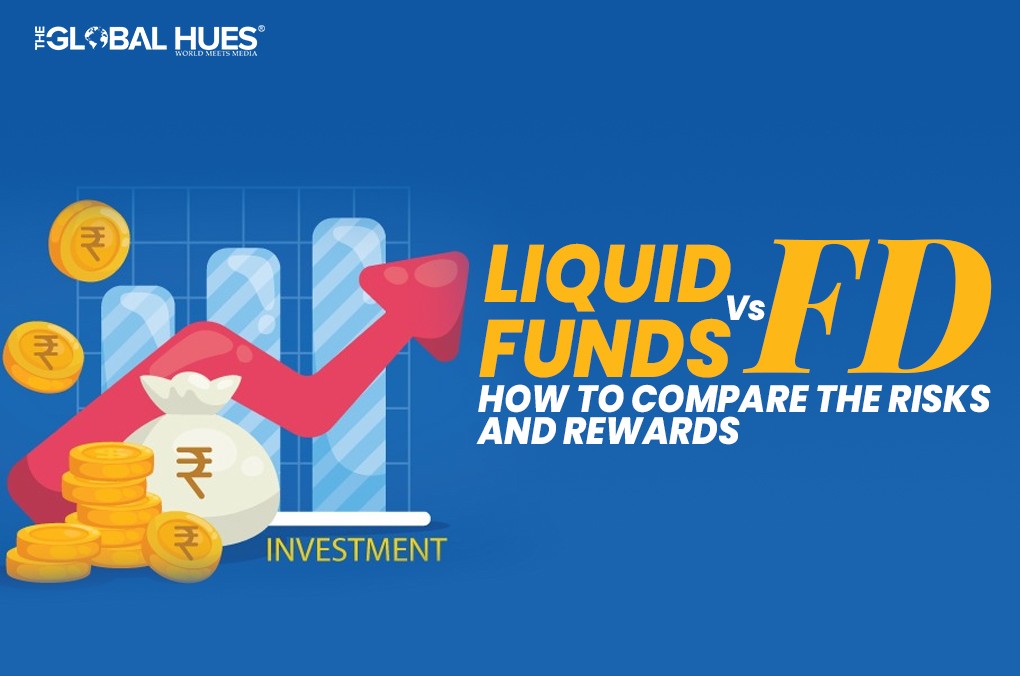Widely preferred for its safety and guaranteed returns, fixed deposits are considered the quintessential debt instrument. However, rising inflation levels and the search for better short-term options have led investors to liquid funds.
Liquid funds invest in fixed-income instruments. They carry the lowest interest-rate risk in the debt funds category of mutual funds. As the name suggests, these are extremely liquid, so much so that you can have your withdrawals processed within 24 hours.
This makes it a great option for parking funds temporarily. However, unlike FDs, the returns are not assured, but you may be able to access higher gains. There are a lot of other factors to consider in the liquid fund vs. FD debate.
A Guide to Investing in Fixed Deposits
FDs are a type of fixed-income investment offered by banks, NBFCs, financial companies, and the post office. The returns are fixed and assured, and your corpus is protected from market volatility.
This low associated risk also means that the interest rate you receive is much lower than other instruments, such as stocks or mutual funds. The biggest factor influencing FD interest rates is inflation, explained as the rate of increase in prices over a given period of time.
If inflation keeps rising as it currently is, the FD scheme will lose value. This will poorly impact the rate of return from a fixed deposit as an investment. In the long run, this could pose a problem, resulting in FDs generating lower returns on your investment.
To combat this, you can try the technique of FD laddering. This involves leveraging the power of compounding and getting access to liquidity at the same time. All you need to do is book fixed deposits that mature at various times, be it one year, two years, three years, and so on.
For instance, if you have ₹9 Lakhs to invest in FDs, don’t invest it in one FD scheme as a lump sum. Instead, split it into three parts: ₹2 Lakhs, ₹3 Lakhs, and ₹4 Lakhs. You can choose the maturity timeline as per your goals. Say you invest ₹2 Lakhs in an FD that matures in two years, ₹3 Lakhs in an FD that matures in three years, and ₹4 Lakhs in an FD that matures in four years.
In this case, when the tenor of your FD of ₹2 Lakhs comes to an end, you can invest it again for three more years. Similarly, when the tenor of your FD of ₹3 Lakhs ends, reinvest it for four more years. Do the same with the FD of ₹4 Lakhs for a longer tenor.
This way, you can book FDs that mature at various timelines for longer durations and benefit from higher interest rates. Of course, this depends on the prevailing rates at the time. However, all in all, this strategy can help you fetch higher returns while also helping you decrease the risk exposure of your investment portfolio.
A Guide to Investing in Liquid Funds
Liquid funds are debt funds that invest in fixed-income instruments such as commercial papers, government securities and treasury bills. A liquid scheme’s investment goal is to offer capital protection and liquidity to investors.
Liquid funds are better than savings accounts in the sense that the scheme provides better returns on idle funds. Savings accounts, however, do not carry any market risk. Liquid funds, while being fairly low-risk investments, are not risk-free. Even if the investment pattern ensures stability, if the credit rating of any underlying security drops, the value of the fund can dip.
For new investors, it is a good idea to start out with liquid funds and then initiate an SIP with an equity fund. While helping you start investing in a phased manner, this also lets you benefit from rupee cost averaging. This involves investing a fixed amount at regular intervals, irrespective of the price per unit.
By investing regularly, you end up investing your money across the market. This suggests that if you remain invested through an economic downturn, the chance of long-term capital appreciation will be multifold.
Liquid Funds vs. FDs: Key Differences
When you compare liquid funds vs. FDs, consider the benefits and features of investing in them.
| Characteristics | Liquid Funds | Fixed Deposits |
| Returns | Higher returns | Lower returns |
| Exit Load | If redeemed in 7 days, a small amount is deducted as the exit load. However, after that, there is no exit load on penalty on withdrawal. | High penalties are charged if the FD is liquidated before maturity. This is usually around 0.5 -1%. |
| Liquidity | Highly liquid offering withdrawal within 1 working day. Other debt-based mutual funds take 2-4 working days to process. | FDs have fixed maturity dates, and liquidating them beforehand is not recommended. However, they are still highly liquid, and you can access the investment prematurely within 24 hours. |
| Risk | Low – but more than FDs | Zero or extremely low |
| Taxation | If held for more than 3 years,
your returns will be considered as long-term capital gains and will be taxed at 20% after indexation. If held for 3 years or less, the returns are taxed per your income tax slab. |
The interest earned is added to your annual income and taxed as per the applicable tax slab.
By investing in a tax-saving FD with a lock-in of three years, you can claim tax deductions of up to ₹1.5 Lakhs under Section 80C of the I-T Act. |
| Minimum Investment | Low
You can invest as little as ₹100 via SIP or pay ₹1,000 as a lump sum. |
Low to moderate
Depending on the issuer, you can start at ₹1,000 or ₹5000. In some cases, the minimum investment required may be ₹25,000. |
| Tenure | 7-91 days | 7 days to 10 years |
| Suitability | Beneficial for short and long-term investors | Generally more beneficial for long-term investors |
In conclusion, consider all angles of the liquid fund vs. FD debate while analysing your investment horizon. Both have their pros and cons, with FDs holding value for long-term investors who want to minimise their risk to nil. However, whether you are comparing the Axis Bank, SBI, HDFC Bank, or Bajaj Finance FD rates, consider the total earnings at the end, with TDS and inflation factored in.
Liquid funds are a better option for stable returns in the short term; however, they are not risk-free and are subject to market influences. Before making an investment decision, make sure to go over your financial plan and pick the option that aligns best with your needs.




